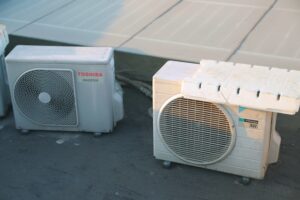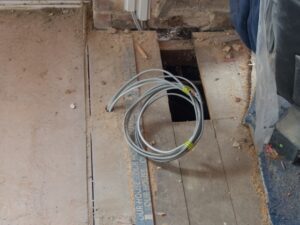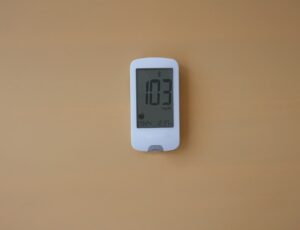Thinking about installing an air conditioner and wondering, “Can I just use my window AC through the wall?”
Yes, a window air conditioner can be used through the wall, but there are important factors to consider before making this installation choice.
So, is it really as simple as it sounds?
We get it—choosing the right air conditioning system for your space can feel like a lot. But don’t worry, we’re here to help make it easier!
At Excel Mechanical, we’ve been helping homeowners and businesses like yours find the perfect cooling solutions. With our expertise in HVAC and plumbing services, we’ll guide you through your options and ensure you get the best value and quality for your needs.
Let’s pause for a moment: Have you thought about where you’re placing the AC, how much cooling power you actually need, or the long-term benefits of your choice?
These factors are essential to making the right decision
Whether you need to cool a small room or an entire office, Excel Mechanical is here to assess your space and budget. We make sure you have the right system for a cool, comfortable environment, without any surprises.
In this blog, you will learn:
- The differences between window and wall air conditioners
- What you need to consider before installing a window air conditioner through the wall
- Other cooling options and how they compare
Ready to get started and learn more?
Let’s dive into the details of what makes these systems tick and which one works best for your space.
Understanding Air Conditioner Types
Before you make any decisions about installing your air conditioner, it’s important to understand the different types available.
You might be wondering, “Which one is the best for my space?” and “How do they all compare?”
Let’s break it down and explore the key differences so you can make an informed choice.
Differences Between Window and Wall Air Conditioners
Window air conditioners are designed to be installed in a window, while wall air conditioners are designed to be installed through a wall.
Window air conditioners are usually less expensive and easier to install than wall air conditioners. They are also more portable, making them a popular choice for renters or those who frequently move.
On the other hand, wall air conditioners are generally more powerful and efficient than window air conditioners. They are also more permanent and can be a better option for homeowners who want a long-term cooling solution.
Through-the-Wall Air Conditioner Basics
Through-the-wall air conditioners are similar to wall air conditioners, but they require a hole to be cut into the wall for installation.
They are more powerful and efficient than window air conditioners and can be a good choice for larger rooms or spaces that require more cooling power. They are also more permanent than window air conditioners and can be a good option for homeowners who want a long-term cooling solution.
Portable air conditioners are another option that can be moved from room to room. They are easy to install and can be a good choice for renters or those who frequently move.
However, they are generally less powerful and efficient than window or wall air conditioners.
Central air conditioning is a whole-house cooling system that is installed in the home’s ductwork.
It is the most expensive and permanent option but provides the most efficient and effective cooling solution for larger homes.
Pre-Installation Considerations
Before you rush into installing a window air conditioner through the wall, there are a few key things to think about to ensure a smooth and successful installation.
Have you considered the wall structure, the measurements, and the cooling needs of your space?
If not, let’s dive into the important factors you should keep in mind before you start the installation process.
Assessing Wall Structure and Material
The first thing to think about is your wall structure.
Not all walls are created equal, and some may require more work than others.
For example, if your wall is made of brick or concrete, it may need additional tools or expertise to create the opening for the air conditioner.
Is your wall made of drywall or something more solid like brick or concrete?
This is important because it determines how difficult or easy the installation will be.
For a successful installation, your wall needs to be strong enough to support the weight of the air conditioner. If your wall is too thin or too weak, you could face problems down the line, like the unit becoming unstable or causing damage to the wall.
Measuring for Proper Fit
Next up: measurements.
You might think you can eyeball it, but proper measuring is crucial for making sure the air conditioner fits perfectly.
Have you measured the dimensions of the unit and the space where it will go?
Ensuring the air conditioner fits snugly in the wall opening is key to making sure it works properly.
Take time to measure the width, height, and depth of the unit and the opening in the wall. This way, you can avoid any surprises later on. Also, check the window opening and the exterior casing of your home, as these will also affect the fit and installation.
It’s all about getting the perfect size so that your unit operates efficiently.
Evaluating Cooling Needs and Capacity
Now, let’s talk about cooling needs.
Have you thought about how much cooling power you actually need?
The BTU (British Thermal Unit) rating of your air conditioner will determine how much area it can cool. It’s important that the unit you choose matches the size of the room and the cooling needs of the space.
For example, a small bedroom might only need a 5,000 to 8,000 BTU air conditioner, while a larger living room might need 12,000 BTU or more. Don’t forget to consider the amount of sunlight the room gets, as this can impact how much cooling capacity is required.
Does the room get a lot of direct sun during the day?
If so, you may need a more powerful unit.
Installation Process
Now that you’ve assessed the wall, measured for the proper fit, and figured out your cooling needs, it’s time to dive into the installation process.
Are you ready to start making things happen?
Let’s go step by step and break down how you can install a window air conditioner through the wall.
Creating the Wall Opening
The first step is to create a proper opening in the wall.
Measure the dimensions of the air conditioner and mark the location of the opening on the wall.
Use a stud finder to locate any studs in the wall that could interfere with the installation.
Cut the opening in the wall using a reciprocating saw, and make sure the hole is slightly larger than the air conditioner.
Securing the Air Conditioner
Once the opening is created, you will need to secure the air conditioner in place.
Install a wall sleeve, which is a metal or plastic frame that fits into the wall opening, to provide support for the air conditioner.
Slide the air conditioner into the wall sleeve and secure it with screws or brackets.
Ensuring Proper Insulation and Sealing
After the air conditioner is secured, you want to ensure proper insulation and sealing around the edges.
Why is this important?
Gaps around the unit can cause air leaks, leading to decreased energy efficiency and higher cooling costs. To prevent this, you’ll need to cover any gaps with plywood or drywall, and then seal the edges using caulk or silicone caulking.
This will help to prevent air from escaping and ensure that the cool air stays inside the room.
Are you ready to make sure every detail is sealed properly so you get the most out of your system?
A little extra effort here can pay off in lower energy bills and a more comfortable space.
Maintenance and Energy Efficiency
Once your air conditioner is installed, it’s crucial to maintain it properly to ensure it works efficiently for years to come.
So, how do you make sure your air conditioner keeps running smoothly?
The key lies in regular maintenance and paying attention to energy efficiency.
Let’s break down both of these aspects and see how you can get the most out of your system.
Regular Cleaning and Care
Regular cleaning is essential for the proper functioning of your window air conditioner.
A dirty air filter can hamper airflow, reduce cooling efficiency, and increase energy costs. Therefore, it is essential to clean the air filter about once a month, or as recommended by the manufacturer when in use.
A clogged filter can also lead to frozen coils, which can damage the unit and reduce its lifespan.
In addition to the air filter, it is essential to clean the coils of your window air conditioner regularly. Dirty coils can reduce the efficiency of the unit and increase energy consumption.
To clean the coils, turn off the power to the unit and remove the front panel. Then, use a soft brush to remove any dust or debris from the coils. You can also use a vacuum cleaner to remove any dirt or debris from the coils.
Understanding Energy Efficiency Ratings
Energy efficiency is an essential consideration when it comes to window air conditioners.
The Energy Efficiency Ratio (EER) is a measure of the unit’s cooling capacity per watt of power consumed.
A higher EER rating means that the unit is more energy-efficient and can save you money on your energy bills.
When shopping for a window air conditioner, look for models with a high EER rating.
Excel Mechanical can help you select the best air conditioner for your needs and budget. As professionals in the HVAC and plumbing industry, we strive for exceptional quality and great value. Whether you need residential or commercial services, Excel Mechanical can provide you with the best possible system to meet your needs.
Additional Considerations and Alternatives
Now that you’ve thought about the installation and maintenance, it’s time to take a step back and weigh the pros and cons of installing a window air conditioner through the wall.
Is this really the best solution for you?
Before making your final decision, it’s important to consider all your options, including some alternatives to window ACs through the wall.
Weighing the Pros and Cons
Before deciding to install a window air conditioner through a wall, it is important to weigh the pros and cons of this option.
On the one hand, installing a window AC through the wall can be a cost-effective alternative to purchasing a through-the-wall AC unit. It can also be aesthetically pleasing, as it does not obstruct natural light or views.
However, it is important to note that this installation method may not be as secure or energy-efficient as a through-the-wall AC unit.
Additionally, it may not be the best option for those who are looking for a permanent cooling solution.
When it comes to selecting a cooling option, it is also important to consider alternative options.
One alternative is a portable air conditioner, which can be moved from room to room and does not require installation.
While portable air conditioners can be less efficient than window or through-the-wall units, they are often a good option for those who are renting or do not want to make a permanent installation.
Exploring Alternative Cooling Options
If you are looking for a more permanent cooling solution, there are a few alternative options to consider.
One option is a through-the-wall AC unit, which is designed specifically for installation through a wall and is generally more secure and energy-efficient than a window AC unit installed through a wall.
Another option is a ductless mini-split system, which can be a good option for those who want to cool multiple rooms or areas of their home.
Ductless mini-split systems are energy-efficient and can be installed without the need for ductwork, making them a good option for those who do not have existing ductwork in their home.
Excel Mechanical is always here to help guide you through these options.
Whether you’re looking for a window unit through the wall or exploring alternatives like mini-split systems, we’re happy to provide expert advice and ensure you make the best decision based on your needs and budget.




